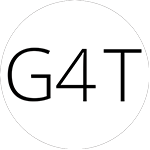
Hey Kid Rock & Roll
One day I was having a cup of coffee and WPKN was playing a band I had never heard before. The DJ played the whole LP start to finish, and from the first song I was a true believer. Not only did I not know who the band was, but their approach to rock & roll was coming from a place that caught me off guard. They sounded like they took a turn off a familiar road and ended up somewhere between The New York Dolls, Bob Marley and Chuck Berry, if they had all been jacked up on speed and quite angry about the state of the nation. If you haven’t guessed, the band was The Clash, and I got to hear the first LP in one glorious shot of anarchy.
The LP simply named The Clash stands today as strong of a statement, both musically and lyrically, as it did in 1977. The topics and the songs written in the late 70’s UK seem equally at home today with the current state of affairs in the USA (maybe the UK also).
In the song “I’m So Bored With The USA,” the lyric “Yankee dollar talk to the dictators of the world, In fact it’s giving orders, an’ they can’t afford to miss a word,” rings like part of the current news cycle.
“Remote Control” takes aim at what is currently referred to here in the USA as “the one percent.” “They had a meeting in Mayfair, They got you down and wanna keep you there, It makes them worried, Their bank accounts, That’s all that matters, You don’t count”.
“Career Opportunities” takes on the lack of good jobs, political conditions and the poor economy. “Career opportunities, the ones that never knock, Every job they offer you is to keep you off the dock. Career opportunities, the ones that never knock”.
The one cover on The Clash is the Junior Murvin reggae classic “Police & Thieves,” taking the band in a direction (reggae) that would serve the band well in the future. My favorite lines from this song are “Police and thieves in the streets (oh yeah), Scaring the nation with their guns and ammunition, Police and thieves in the street (oh yeah), Fighting the nation with their guns and ammunition.” Once again the lyrics are perfectly at home with the current climate here in America.
As a band, Joe Strummer’s rhythm guitar parts played on a Fender Telecaster are the perfect foil to Mick Jones’ style of playing and guitar of choice –like so many others before him, most notably Johnny Thunders — a single pickup double cutaway Les Paul Junior. While most guitarists in punk bands avoided taking leads, Mick’s leads cut through the mix with razor sharp precision. Paul Simonon on bass and Terry Chimes on drums are the perfect rhythm section for whatever the band decided to take on. From straight out high velocity punk, classic rock & roll and reggae, everyone is up to the task.
This is as damn near perfect as it gets for a first LP. The bands next two LP’s would reveal that as great as it is, The Clash would be the first of three of the most groundbreaking UK R&R LP’s from a band since the original British Invasion of the 60’s.










